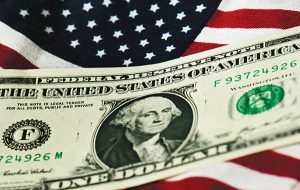Bloomberg
Last year, most US investors and central bankers underestimated how high inflation would climb. Now they may be underestimating how high interest rates will need to go to bring it back down.
In spite of the Federal Reserve’s most aggressive credit tightening campaign in four decades, the US economy and financial markets started the New Year with a bang. Payrolls surged, retail sales jumped and equity prices soared.
Combined with an inflation rate that’s proving sticky and running well above the Fed’s 2% target, that’s a recipe for more rate hikes from central bank Chair Jerome Powell and his colleagues to cool things off. “There’s a good chance the Fed does more than the markets expect,†said Bruce Kasman, chief economist for JPMorgan Chase & Co.
The risk is that tighter credit eventually catches up with the economy and triggers a recession, as consumers run down the financial buffers they built up during the pandemic. It’s those extra savings — Moody Analytics chief economist Mark Zandi reckons there’s still $1.6 trillion left — and a vibrant jobs market that has allowed households to ride out soaring prices and borrowing costs.
Investors are already upping their bets on how far the Fed will raise rates this tightening cycle. They now see the federal funds rate climbing to 5.2% in July, according to trading in the US money markets. That compares with a perceived peak rate of 4.9% just two weeks ago, and the central bank’s current 4.5% to
Economists are marking up their estimates of what’s known as the terminal rate — the highest point that the Fed will get to. Deutsche Bank Securities chief US economist Matthew Luzzetti this week raised his forecast to 5.6% from 5.1%, citing a resilient labour market, easier financial conditions and elevated inflation.
Fed policymakers are sounding more hawkish as well. “We must remain prepared to continue rate increases for a longer period than previously anticipated, if such a path is necessary to respond to changes in the economic outlook or to offset any undesired easing in conditions,†Federal Reserve Bank of Dallas President Lorie Logan said.
 The Gulf Time Newspaper One of the finest business newspapers in the UAE brought to you by our professional writers and editors.
The Gulf Time Newspaper One of the finest business newspapers in the UAE brought to you by our professional writers and editors.
